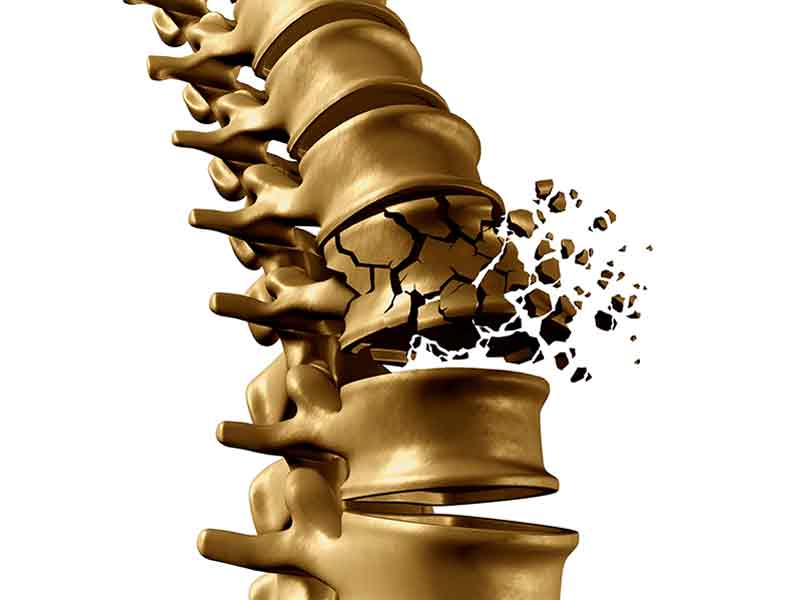Get Easy Health Digest™ in your inbox and don’t miss a thing when you subscribe today. Plus, get the free bonus report, Mother Nature’s Tips, Tricks and Remedies for Cholesterol, Blood Pressure & Blood Sugar as my way of saying welcome to the community!
Bone drugs are causing fractures

A group of medicines that were developed to curb osteoporosis are to blame for an increase in thigh bone fractures. When this happens, doctors are recommending that you stop taking the drug and maximize calcium and vitamin D. You think?
These drugs, known as bisphosphonates, are taken to increase bone mineral density. Studies have found that bisphosphonates decrease fractures in the vertebrae by more than 50 percent and fractures elsewhere by 40 percent.
Those stats are great — except for the fact that the drugs are helping cause atypical femur fractures. The fractures typically occur with little or no force or trauma, are often preceded by pain and the majority occur in patients who have used the osteoporosis drugs an average of three years.
This is frightening stuff. And we may never learn the truth from the pharmaceutical giants as to why a drug created to protect against fragility fractures of the lower spine, wrist, femur, pelvis and upper arm is weakening and fracturing thigh bones.
Better ways to prevent osteoporosis
The authors of the study recommend that doctors “responsible for the management of osteoporosis must be aware of this issue, be able to diagnose these fractures before they are complete and have a strategy for managing bisphosphonate therapy long term.”
Sensibly, part of that recommended strategy is “immediate cessation of bisphosphonates.” They go on to suggest that calcium and vitamin D supplementation should be maximized — all the while forgetting other nutrients paramount to bone health — but here’s a novel idea…
Instead of prescribing a drug to patients that you know may strengthen some bones while weakening others… and then planning to advise those same patients to stop the drug and beef up bone-strengthening nutrients at the first sign of thigh fracture — let’s just skip to the nutrients and bone-building exercises in the first place.
Nutrients are the key
One of the most important and natural ways to reduce your risk of osteoporosis and support long-term bone and overall health is to follow a healthy diet rich in essential vitamins and minerals. There are four nutrients you should focus on…
Calcium-rich foods are especially important for healthy bones and teeth, as well as proper function of the heart, muscles and nerves. Since the body cannot produce calcium on its own, it must be absorbed through calcium-rich foods, which include dark-green leafy vegetables such as bok choy, chard, kale, broccoli, dandelion greens and cooked spinach, as well as sea vegetables such as kelp and nori.
Many people, particularly post-menopausal women, may be deficient in magnesium. In fact, lack of magnesium is often a greater health issue than lack of calcium. For this reason, it is important to fill your diet with magnesium-rich green vegetables such as lightly cooked spinach, raw cacao (chocolate), beans, peas, nuts, seeds, and whole, unrefined grains. When supporting your diet with calcium-magnesium supplements, Dr. Isaac Eliaz recommends taking one with a magnesium-to-calcium ratio of 1-2:1, which will help you maintain normal muscle and nerve function, sustain a healthy immune system and build strong bones.
Vitamin D3 is essential for calcium absorption. Vitamin D3 is actually a hormone that the body creates naturally from the ultraviolet-B (UVB) rays in sunlight, as well as from foods such as: shiitake mushrooms and other medicinal mushrooms; cod liver oil; and fatty fish, including salmon, sardines and mackerel. If you choose to supplement with this nutrient, be sure to select a food-based form of vitamin D3 for optimal results.
Vitamin K is also a critical nutrient for heart and bone health. There are two natural forms used by the body: K1 and K2. Vitamin K1 is used for blood coagulation, while K2 is used for calcium regulation. K2 ensures that the calcium you consume is deposited in your bones — not in your blood vessels and other soft tissues where it can cause hardening and related complications. Vitamin K2 is mostly found in meat, organ meats (liver), cheese, egg yolks and fermented foods — particularly Natto, a fermented form of soy native to Japan. K1 is found in leafy greens such as kale, spinach, chard, broccoli, Brussels sprouts, parsley and romaine lettuce.
Essential exercise for strong bones
A regular exercise regimen can also help strengthen bones, reduce your risk of osteoporosis, prevent the breakdown of bone tissue and increase muscle strength, coordination and balance. Since bone is living tissue, it responds to exercise by becoming stronger and more durable. As a result, people who exercise regularly have greater bone density and strength than those who do not. Some of the best types of exercise for your bones are low-impact weight-bearing actions, such as light weight training, yoga, walking and hiking.
Research at the University of Missouri-Columbia shows that the right kind of weight-lifting exercises and certain jumping workouts, done over the course of six months, can tighten up bone density and increase your bone mass. Weight even as low as 10 pounds can have a positive effect on your bone strength.
It’s obviously easier to keep you bones strong by following these tips as you age. If you neglect your bones and decide at the age of 80 to help them out, the process will be harder. An ounce of prevention now can help you avoid the dangers of weak bones as well as the risk of big pharma’s bone drugs.












